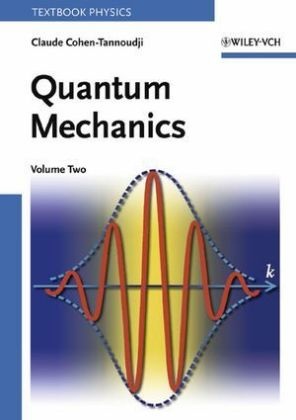Read more
Informationen zum Autor Claude Cohen-Tannoudji! 1933 in Constantine (Algerien) geboren! studierte an der École Normale Supérieure in Paris! wo er sich 1962 habilitierte. 1973 erfolgte die Aufnahme am Collège de France. Seit 1981 ist er Mitglied der Akademie der Wissenschaften. 1997 erhielt Claude Cohen-Tannoudji zusammen mit Steven Chu und William D. Phillips für Arbeiten zur Laserkühlung neutraler Atome den Nobelpreis für Physik. Anwendung findet diese Methode bei der Entwicklung präziser Atomuhren sowie für exakte Positionsbestimmungen und für die Weltraumnavigation. Heute arbeitet er am Laboratoire de Physique an der École Normale Supérieure (Paris).Sein mit Bernard Diu und Franck Laloë geschriebenes Werk über Quantenmechanik gehört zu den Standardwerken auf diesem Gebiet und wird regelmäßig von Dozenten von QM-Vorlesungen empfohlen. Klappentext Beginning students of quantum mechanics frequently have difficulty separating essential underlying principles from the specific examples to which these principles have historically been applied. This book is especially designed to eliminate that difficulty. Fourteen chapters! augmented by 14 "complementary sections!" provide a clarity of organization! careful attention to pedagogical details! and a wealth of topics and examples that allow physics professors to tailor courses to meet students' specific needs. Each chapter starts with a clear exposition of the problem to be treated and then logically develops the physical and mathematical concept. These chapters emphasize the underlying principles of the material! undiluted by extensive references to applications and practical examples. (Such applications and practical examples are contained in the complementary sections.) The book begins with a qualitative introduction to quantum mechanical ideas using simple optical analogies and continues with a systematic presentation of the mathematical tools and postulates of quantum mechanics as well as a discussion of their physical content. Applications follow! starting with the simplest ones (two-level systems! the harmonic oscillator! etc.)! and becoming gradually more complicated (the hydrogen atom! approximation methods! etc.). The complementary sections each expand this basic knowledge! supplying a wide range of applications and related topics which make use of the essential skills. Here the authors include carefully written! detailed expositions of a large number of special problems and more advanced topics-integrated as an essential portion of the text. These topics! however! are not interdependent; this allows professors to direct their quantum mechanics courses toward both physics and chemistry students. Zusammenfassung Beginning students of quantum mechanics frequently experience difficulties separating essential underlying principles from the specific examples to which these principles have been historically applied. Nobel-Prize-winner Claude Cohen-Tannoudji and his colleagues have written this book to eliminate precisely these difficulties. Fourteen chapters provide a clarity of organization, careful attention to pedagogical details, and a wealth of topics and examples which make this work a textbook as well as a timeless reference, allowing to tailor courses to meet students' specific needs. Each chapter starts with a clear exposition of the problem which is then treated, and logically develops the physical and mathematical concept. These chapters emphasize the underlying principles of the material, undiluted by extensive references to applications and practical examples which are put into complementary sections. The book begins with a qualitative introduction to quantum mechanical ideas using simple optical analogies and continues with a systematic and thorough presentation of the mathematical tools and postulates of quantum mechanics as well as a discussion of their physical content. Applications follow, starting with the simples...
List of contents
* An Elementary Approach to the Quantum Theory of Scattering by a Potential Electron Spin* Addition of Angular Momenta* Stationary Perturbation Theory* An Application of Perturbation Theory* The Fine and Hyperfine Structure of the Hydrogen Atom* Approximation Methods for Time-Dependent Problems* Systems of Identical ParticlesAPPENDICES* Fourier Series and the Fourier Transform* The Dirac `` Function''* The Lagrangian and Hamiltonian in Classical Mechanics

